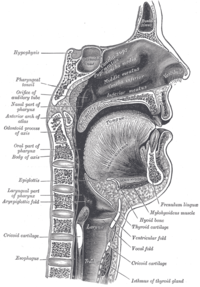
Photo from wikipedia
The ability to follow spoken instructions is critical for children's learning in school and relies on the storage and processing of information in working memory. This study compared the effects… Click to show full abstract
The ability to follow spoken instructions is critical for children's learning in school and relies on the storage and processing of information in working memory. This study compared the effects of two encoding strategies (motor imagery and verbal rehearsal) on children's ability to follow spoken instructions in a working memory paradigm. A total of 146 children aged 7-12 years completed an instruction span task. In this task, children listened to a series of action-object commands and encoded them by either motor imagery or verbal rehearsal. They then attempted to recall the sequence in serial order by either enacted recall or verbal recall. Overall, children's ability to follow spoken instructions increased with age. In all age groups, children showed superior recall of instructions when they imagined the actions compared with verbal rehearsal of the actions during encoding, and this benefit of motor imagery was similar for verbal recall and enacted recall. Younger children reported motor imagery as more helpful than verbal rehearsal for remembering instructions, whereas older children considered verbal rehearsal as more useful. The study provides novel evidence for motor imagery as a superior strategy (relative to verbal rehearsal) for remembering spoken instructions in school-age children.
Journal Title: Journal of experimental child psychology
Year Published: 2020
Link to full text (if available)
Share on Social Media: Sign Up to like & get
recommendations!